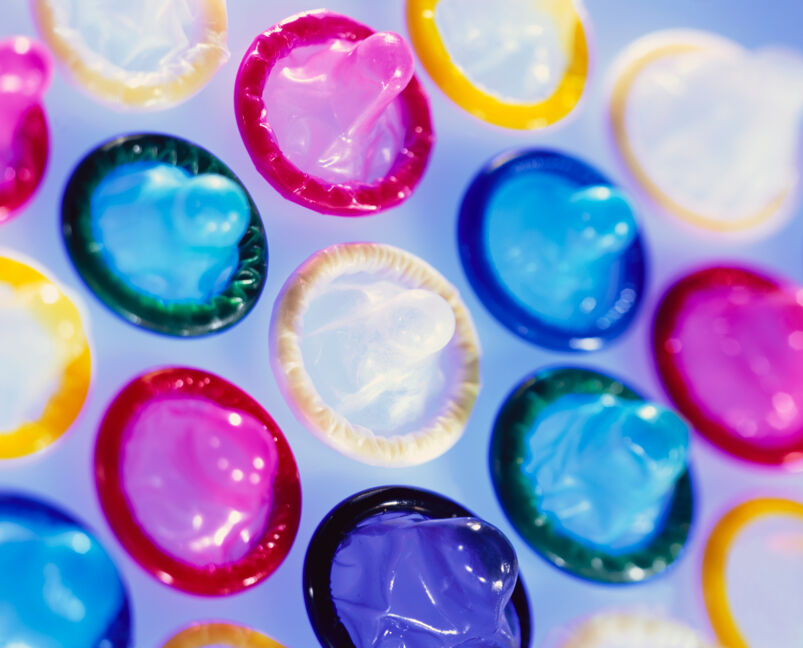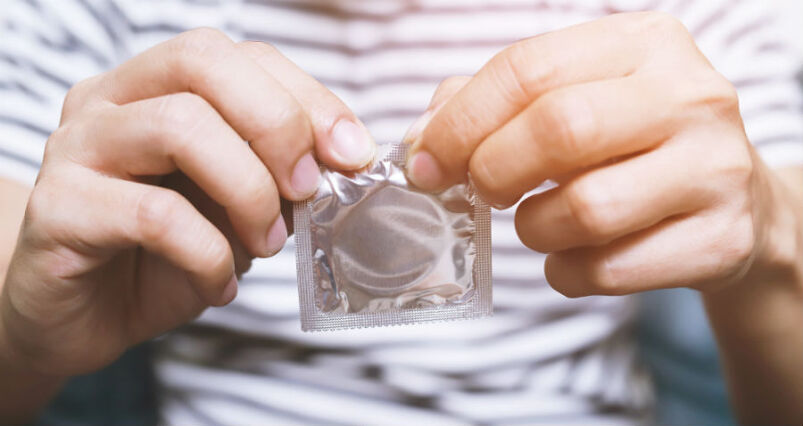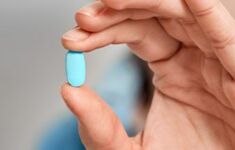
A new study has confirmed what most sexually active gay men will already know: Less of us are using condoms when we have sex compared to ten years ago.
The study, published in AIDS and Behavior, was conducted by researchers at the University of Washington. It drew its data from the American Men’s Internet Survey (2014-2019). It looked specifically at men who have condomless anal sex with men who are not on PrEP.
The number of men in the study having condomless sex rose by 2.2% each year. However, the rise was greater in younger men (rising 7.2% per year for those aged 15-24 years) and Hispanic men (rising 18%).
How about we take this to the next level?
Subscribe to our newsletter for a refreshing cocktail (or mocktail) of LGBTQ+ entertainment and pop culture, served up with a side of eye-candy.
Overall, condom use remained more popular than PrEP. This might be partly due to barriers to obtaining PrEP, among other factors. Around 15% of the men were taking PrEP.
The vast majority of men questioned believed condoms to be “very effective” (60%) or “somewhat effective” (36%) at preventing HIV transmission.
However, 24% said they “never” used condoms, compared to 50% who said they “always” or “sometimes” used them. The remainder said they rarely used them.
Clearly, there is a large number of guys having condomless sex who are not on PrEP. If their partner is HIV positive and undetectable, they cannot pass on the virus. However, not everyone knows their HIV status or is on treatment.
Besides HIV, condoms can also help prevent the transmission of other STIs. The rise in gonorrhea and syphilis diagnoses in the US in recent years is in part related to declining condom use.
Lead author, Steven Goodreau, a professor of anthropology, praised PrEP but also highlighted the benefits of condoms.
“Different things work for people in different circumstances and times of their lives. PrEP has many benefits. It’s something that doesn’t have to happen in the moment, something an individual can decide on instead of having to negotiate with a partner. Some people really don’t like condoms and aren’t going to use them, so PrEP provides another option for them.
“But like most pharmaceutical interventions, it means people need to know about it and be continuously tied to the healthcare system.”
“There are all sorts of things happening in people’s lives — from unstable housing to dealing with mental health and substance use — that make taking a pill every day not the easiest thing to do. So, PrEP has positives but also challenges,” he said in a press statement.
“The same with condoms. They’re far cheaper and much easier to access. For some people the lack of daily regimen is a plus. They prevent a much wider range of sexually transmitted infections, not just HIV. But they also take their own form of planning and negotiation. In the end, I see both as key to lowering HIV transmission rates.”

The Biden administration announced in 2022 that it was looking at launching a 10-year $9.8 billion nationwide delivery program for PrEP. It’s part of efforts to end HIV transmission by 2030.
Goodreau believes that although that although such initiatives are great, we must also promote condom use.
“Before PrEP came out, HIV prevention for gay and bisexual men had condoms as a central pillar — perhaps the central pillar — for about three decades. Of course, we were all tired of talking about them. So, I get why, when PrEP came out, it was seen as a miracle and the pendulum swung in that direction. But it’s a decade into PrEP delivery and I think it’s time to look at that and say, ‘Is it time for the pendulum to swing back a bit?’”
He continued, “I’d like people to have open, honest, sincere conversations about how much condom promotion we’ve been doing. What messages have we been putting out? What haven’t we been doing, and why? Is it because there aren’t folks who would benefit from those conversations, or are we just tired of having them?”
He also said that learning about safer sex in schools is of vital importance.
“LGBTQ+ inclusive sex education is extremely important. Only about half of U.S. high schools have it, and that’s a key first place for young, gay and bisexual men to learn about the different prevention methods and what would work for them given where they are in life.”
He also suggested that some dating apps could do more to highlight condom use as a preference.
“In the end, it’s key to remember that things like condom use are highly subject to social norms — many people use what they see and hear from their peers and beyond as a guide for their own decisions,” he said. “Even just a little bit more attention to the topic may help to get many of those conversations started again.”
Related:
This state just took a major step forward in expanding access to PrEP. Will other states follow suit?
It’s a move to further bring down HIV transmission.
This popular gay hotspot has seen a 95% drop in new HIV cases. Here’s how they did it.
One of its recent HIV awareness adverts is aimed at older men traumatized by living through the epidemic.






















Prax07
Not surprised. I’ve never used a condom before, and not on prep. No one I’ve ever been with has asked to use a condom, and no one as far as I’m aware uses prep either.
Also have never had an STD.
snpwm
‘Great news’ Prax07. I guess you are a top and you think you are invincible, eh? Well, tops do get hiv too if they keep playing russian roulette, meaning going raw all the time.
Prax07
Actually no, not a top, at all. Strictly a bottom. Started sex at 16, now nearly thirty years later still no STDs. Guess I’m just lucky.
Kangol2
You’re luckier than a deck of cards full of nothing but aces.
Over the last few decades I’ve known numerous guys who’ve gotten HIV from one chance condomless anal-sex encounter after not getting HIV for a good stretch, and as many who’ve caught an STD/STI. These seroconversions happened in one of the many major and some smaller ones in the US, Europe and Latin America. I’ve never known a single man who’s contracted HIV while wearing a condom. I’ve also not yet met a single man who’s seroconverted while on PrEP or after using PEP.
Could be your body is somehow naturally resistant, which is great, but I wouldn’t urge anyone else to bank on the odds of that roulette wheel.
MISTERJETT
never had an STD? well, you’re due. just keep doing what you’re doing.
My2CentsWorth
There is a big risk that after Trump resume his role as the most unfit president ever that aid, such as the Biden plan to make PrEP more available. Despite his claims that he has done more for LGBTQ people (and also Blacks) than any other president he will be inclined to give in to the extreme faux-religious right and the PrEP promise will not be the only thing that will end.
winemaker
Condomless sex especially with strangers or guys you don’t know is a fools game, guaranteed. Granted there are drugs for prevention like Prep, big deal. What happens when you build up a tolerance for these drugs ( that’re expensive and often unaffordable and often not covered by health insurance ) and there’s no drug to fight a possible infection, then what do you do? Besides this, there are the long term negative effects of long term drug use on the body to consider. If this doen’t scare you the rise in STI’s like the new strains of clap and syphlis that are becoming more prevalent with drug resistant strains is something to consider. Think of it this way, before the discovery of penicillin in 1928, illness and infections, like influenza and syphlis now treated and cured with penicillin were often death sentences.